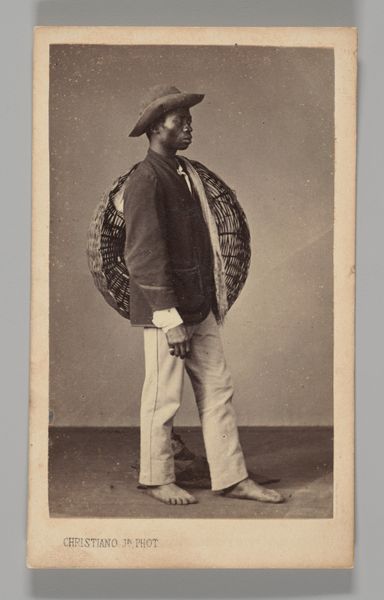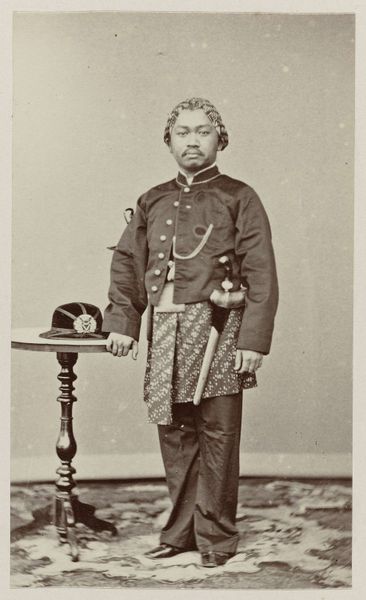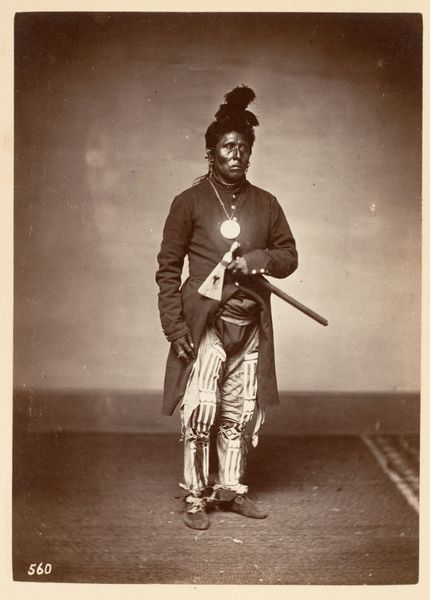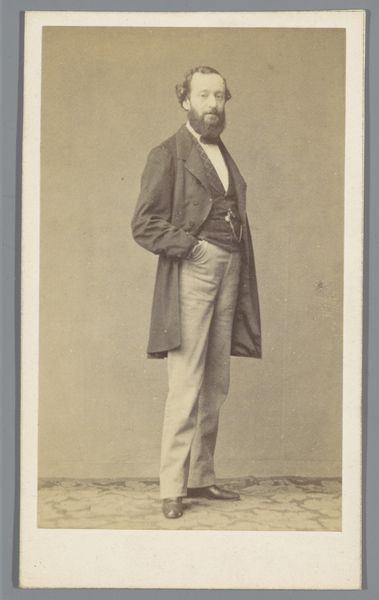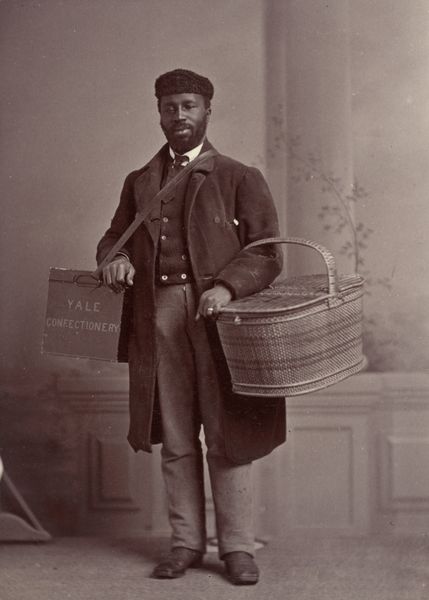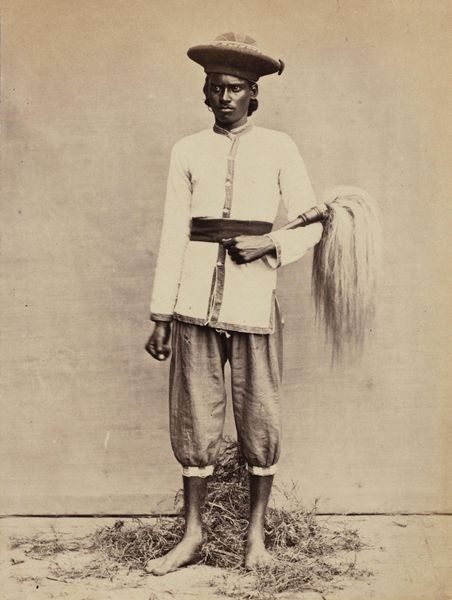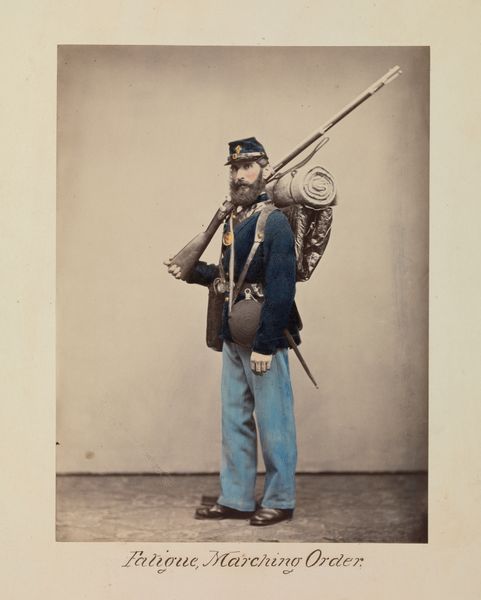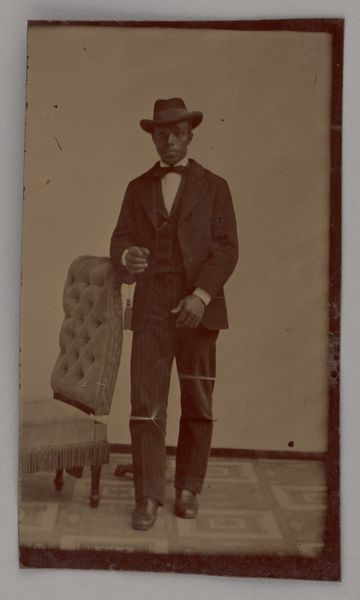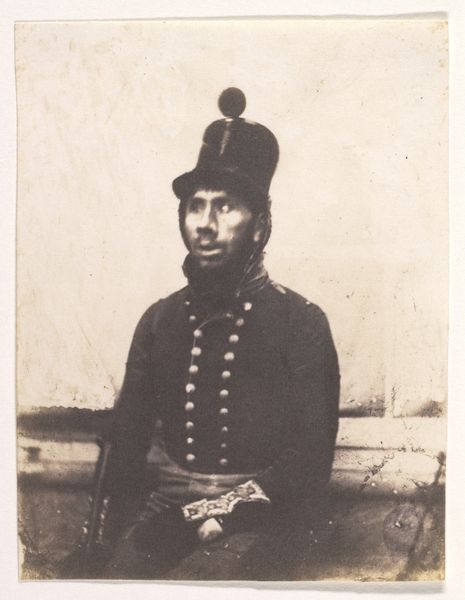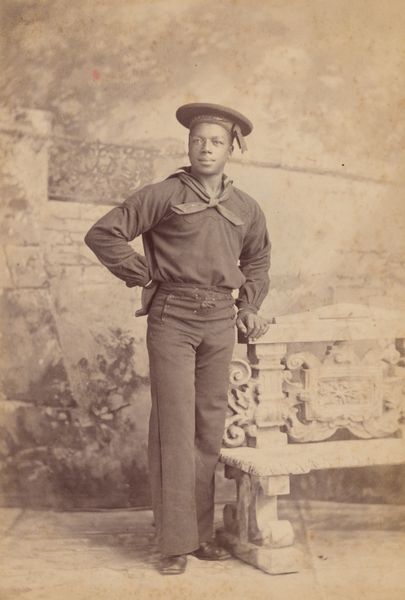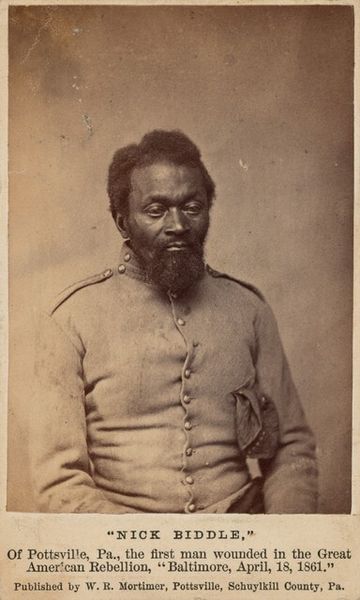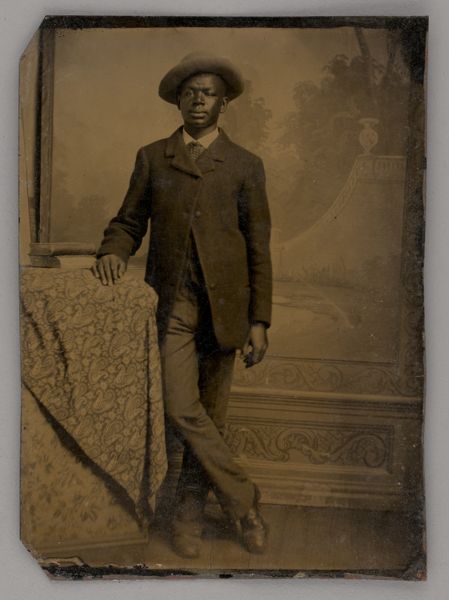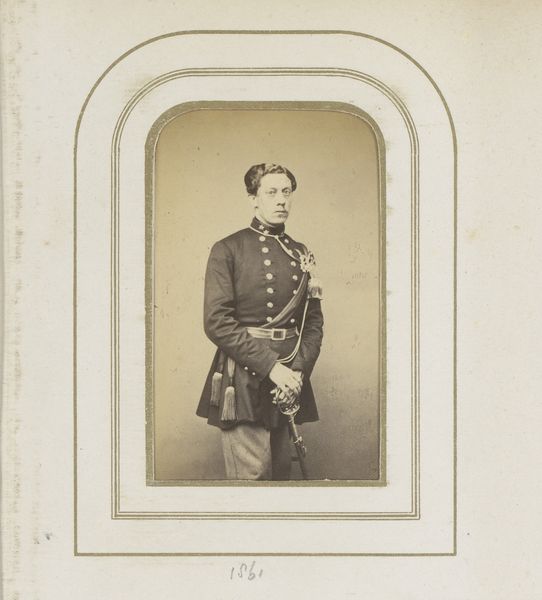
photography, gelatin-silver-print
#
portrait
#
african-art
#
still-life-photography
#
figuration
#
photography
#
historical photography
#
gelatin-silver-print
#
19th century
#
history-painting
#
realism
Dimensions: image/sheet: 8.8 × 5.8 cm (3 7/16 × 2 5/16 in.) mount: 10.2 × 6.3 cm (4 × 2 1/2 in.)
Copyright: National Gallery of Art: CC0 1.0
This photograph, titled 'Christopher Anderson,' was created by Gayford & Speidel in the 1860s using the wet collodion process, a dominant photographic technique of the era. The materiality of this image is key to its meaning. Thinly coated onto glass, the collodion emulsion created a sharp, detailed negative. From this, multiple prints like this one could be made, fixed with chemicals, and mounted onto card stock. The resulting sepia tone, the texture of the paper, the slight imperfections – all speak to the hands-on processes involved. These small, reproducible images democratized portraiture. More importantly, the photograph captures the image of a Black soldier in the Union Army. He stands as a powerful figure, a testament to the struggles of labor, politics, and emancipation during the American Civil War. By considering the materials and making of this image, we can appreciate its historical significance, and challenge the traditional boundaries between documentation, artistry, and social change.
Comments
No comments
Be the first to comment and join the conversation on the ultimate creative platform.
